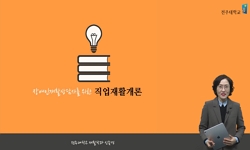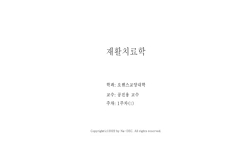Objective To identify different contributions of motor and sensory variables for independent ambulation of patients with incomplete spinal cord injury (SCI), and reveal the most significant contributors among the variables.Methods The retrospective st...
http://chineseinput.net/에서 pinyin(병음)방식으로 중국어를 변환할 수 있습니다.
변환된 중국어를 복사하여 사용하시면 됩니다.
- 中文 을 입력하시려면 zhongwen을 입력하시고 space를누르시면됩니다.
- 北京 을 입력하시려면 beijing을 입력하시고 space를 누르시면 됩니다.


Degree of Contribution of Motor and Sensory Scores to Predict Gait Ability in Patients With Incomplete Spinal Cord Injury
한글로보기https://www.riss.kr/link?id=A104772214
- 저자
- 발행기관
- 학술지명
- 권호사항
-
발행연도
2017
-
작성언어
English
- 주제어
-
등재정보
KCI등재,SCOPUS
-
자료형태
학술저널
- 발행기관 URL
-
수록면
969-978(10쪽)
-
KCI 피인용횟수
0
- 제공처
- 소장기관
-
0
상세조회 -
0
다운로드
부가정보
다국어 초록 (Multilingual Abstract)
Objective To identify different contributions of motor and sensory variables for independent ambulation of patients with incomplete spinal cord injury (SCI), and reveal the most significant contributors among the variables.Methods The retrospective study included 30 patients with incomplete SCI and lesions were confirmed by magnetic resonance imaging. Motor and sensory scores were collected according to the International Standards for Neurological Classification of Spinal Cord Injury. The variables were analyzed by plotting ROC (receiver operating characteristic) curves to estimate their differential contributions for independent walking. The most significant functional determinant was identified through the subsequent logistic regression analysis.Results Motor and sensory scores were significantly different between the ambulators and non-ambulators. The majority was associated to the function of lower extremities. Calculation of area under ROC curves (AUC) revealed that strength of hip flexor (L2) (AUC=0.905, p<0.001) and knee extensor (L3) (AUC=0.820, p=0.006) contributed the greatest to independent walking. Also, hip flexor strength (L2) was the single most powerful predictor of ambulation by the logistic regression analysis (odds ratio=6.3, p=0.049), and the model fit well to the data.Conclusion The most important potential contributor for independent walking in patients with incomplete SCI is the muscle strength of hip flexors, followed by knee extensors compared with other sensory and motor variables.
참고문헌 (Reference)
1 Ditunno PL, "Who wants to walk? Preferences for recovery after SCI: a longitudinal and cross-sectional study" 46 : 500-506, 2008
2 Scivoletto G, "Who is going to walk? A review of the factors influencing walking recovery after spinal cord injury" 8 : 141-, 2014
3 Neptune RR, "The effect of walking speed on muscle function and mechanical energetics" 28 : 135-143, 2008
4 McDonald JW, "Spinal-cord injury" 359 : 417-425, 2002
5 Pagliacci MC, "Spinal cord lesion management in Italy: a 2-year survey" 41 : 620-628, 2003
6 Hussey RW, "Spinal cord injury: requirements for ambulation" 54 : 544-547, 1973
7 Crozier KS, "Spinal cord injury: prognosis for ambulation based on sensory examination in patients who are initially motor complete" 72 : 119-121, 1991
8 Crozier KS, "Spinal cord injury: prognosis for ambulation based on quadriceps recovery" 30 : 762-767, 1992
9 Noreau L, "Spinal cord injury, exercise and quality of life" 20 : 226-250, 1995
10 Catz A, "Spinal Cord Independence Measure:comprehensive ability rating scale for the spinal cord lesion patient" 44 : 65-68, 2007
1 Ditunno PL, "Who wants to walk? Preferences for recovery after SCI: a longitudinal and cross-sectional study" 46 : 500-506, 2008
2 Scivoletto G, "Who is going to walk? A review of the factors influencing walking recovery after spinal cord injury" 8 : 141-, 2014
3 Neptune RR, "The effect of walking speed on muscle function and mechanical energetics" 28 : 135-143, 2008
4 McDonald JW, "Spinal-cord injury" 359 : 417-425, 2002
5 Pagliacci MC, "Spinal cord lesion management in Italy: a 2-year survey" 41 : 620-628, 2003
6 Hussey RW, "Spinal cord injury: requirements for ambulation" 54 : 544-547, 1973
7 Crozier KS, "Spinal cord injury: prognosis for ambulation based on sensory examination in patients who are initially motor complete" 72 : 119-121, 1991
8 Crozier KS, "Spinal cord injury: prognosis for ambulation based on quadriceps recovery" 30 : 762-767, 1992
9 Noreau L, "Spinal cord injury, exercise and quality of life" 20 : 226-250, 1995
10 Catz A, "Spinal Cord Independence Measure:comprehensive ability rating scale for the spinal cord lesion patient" 44 : 65-68, 2007
11 Light LH, "Skeletal transients on heel strike in normal walking with different footwear" 13 : 477-480, 1980
12 Adriaansen JJ, "Secondary health conditions in persons with a spinal cord injury for at least 10 years: design of a comprehensive long-term cross-sectional study" 35 : 1104-1110, 2013
13 Catz A, "SCIM: spinal cord independence measure (version II): sensitivity to functional changes" 141 : 1025-1031, 2002
14 Frost FS, "Role of rehabilitation after spinal cord injury" 20 : 549-559, 1993
15 Perry J, "Rehabilitation of the neurologically disabled patient: principles, practice, and scientific basis" 58 : 799-816, 1983
16 Oleson CV, "Prognostic value of pinprick preservation in motor complete, sensory incomplete spinal cord injury" 86 : 988-992, 2005
17 Putzke JD, "Predictors of life satisfaction: a spinal cord injury cohort study" 83 : 555-561, 2002
18 Waters RL, "Prediction of ambulatory performance based on motor scores derived from standards of the American Spinal Injury Association" 75 : 756-760, 1994
19 Nadeau S, "Plantarflexor weakness as a limiting factor of gait speed in stroke subjects and the compensating role of hip flexors" 14 : 125-135, 1999
20 Barbeau H, "Physical determinants, emerging concepts, and training approaches in gait of individuals with spinal cord injury" 23 : 571-585, 2006
21 Han ZA, "People with spinal cord injury in Korea" 96 (96): S83-85, 2017
22 Simon SR, "Peak dynamic force in human gait" 14 : 817-822, 1981
23 Hsieh F, "Nonparametric and semiparametric estimation of the receiver operating characteristic curve" 24 : 25-40, 1996
24 Katoh S, "Motor recovery of patients presenting with motor paralysis and sensory sparing following cervical spinal cord injuries" 33 : 506-509, 1995
25 Waters RL, "Motor and sensory recovery following incomplete tetraplegia" 75 : 306-311, 1994
26 Waters RL, "Motor and sensory recovery following incomplete paraplegia" 75 : 67-72, 1994
27 Zmitrewicz RJ, "Mechanical energetic contributions from individual muscles and elastic prosthetic feet during symmetric unilateral transtibial amputee walking: a theoretical study" 40 : 1824-1831, 2007
28 Kim CM, "Level walking and ambulatory capacity in persons with incomplete spinal cord injury: relationship with muscle strength" 42 : 156-162, 2004
29 Kirshblum SC, "International standards for neurological classification of spinal cord injury (revised 2011)" 34 : 535-546, 2011
30 Beutel J, "Handbook of medical imaging: physics and psychophysics" SPIE Press 2000
31 Fawcett JW, "Guidelines for the conduct of clinical trials for spinal cord injury as developed by the ICCP panel: spontaneous recovery after spinal cord injury and statistical power needed for therapeutic clinical trials" 45 : 190-205, 2007
32 Hosmer DW, "Goodness of fit tests for the multiple logistic regression model" 9 : 1043-1069, 1980
33 Jain NB, "Factors associated with health-related quality of life in chronic spinal cord injury" 86 : 387-396, 2007
34 Neptune RR, "Contributions of the individual ankle plantar flexors to support, forward progression and swing initiation during walking" 34 : 1387-1398, 2001
35 Scivoletto G, "Clinical factors that affect walking level and performance in chronic spinal cord lesion patients" 33 : 259-264, 2008
36 Hosmer DW, "Applied logistic regression" John Wiley & Sons 2004
37 Curt A, "Ambulatory capacity in spinal cord injury:significance of somatosensory evoked potentials and ASIA protocol in predicting outcome" 78 : 39-43, 1997
38 Hagen EM, "Acute complications of spinal cord injuries" 6 : 17-23, 2015
39 Catz A, "A multicenter international study on the Spinal Cord Independence Measure, version III: Rasch psychometric validation" 45 : 275-291, 2007
40 van Middendorp JJ, "A clinical prediction rule for ambulation outcomes after traumatic spinal cord injury: a longitudinal cohort study" 377 : 1004-1010, 2011
동일학술지(권/호) 다른 논문
-
Decrement of Serum Vitamin D Level After Stroke
- 대한재활의학회
- 김기영
- 2017
- KCI등재,SCOPUS
-
Heart Rate Variability Among Children With Acquired Brain Injury
- 대한재활의학회
- 김성우
- 2017
- KCI등재,SCOPUS
-
- 대한재활의학회
- 박희선
- 2017
- KCI등재,SCOPUS
-
Biomechanical Parameters in Plantar Fasciitis Measured by Gait Analysis System With Pressure Sensor
- 대한재활의학회
- 유승돈
- 2017
- KCI등재,SCOPUS
분석정보
인용정보 인용지수 설명보기
학술지 이력
| 연월일 | 이력구분 | 이력상세 | 등재구분 |
|---|---|---|---|
| 2023 | 평가예정 | 해외DB학술지평가 신청대상 (해외등재 학술지 평가) | |
| 2020-01-01 | 평가 | 등재학술지 유지 (해외등재 학술지 평가) |  |
| 2011-06-28 | 학술지명변경 | 한글명 : 대한재활의학회지 -> Annals of Rehabilitation Medicine |  |
| 2011-01-01 | 평가 | 등재학술지 유지 (등재유지) |  |
| 2009-01-01 | 평가 | 등재학술지 유지 (등재유지) |  |
| 2007-01-01 | 평가 | 등재학술지 유지 (등재유지) |  |
| 2005-01-01 | 평가 | 등재학술지 유지 (등재유지) |  |
| 2002-07-01 | 평가 | 등재학술지 선정 (등재후보2차) |  |
| 2000-01-01 | 평가 | 등재후보학술지 선정 (신규평가) |  |
학술지 인용정보
| 기준연도 | WOS-KCI 통합IF(2년) | KCIF(2년) | KCIF(3년) |
|---|---|---|---|
| 2016 | 0.19 | 0.19 | 0.17 |
| KCIF(4년) | KCIF(5년) | 중심성지수(3년) | 즉시성지수 |
| 0.19 | 0.19 | 0.397 | 0.01 |





 KCI
KCI







